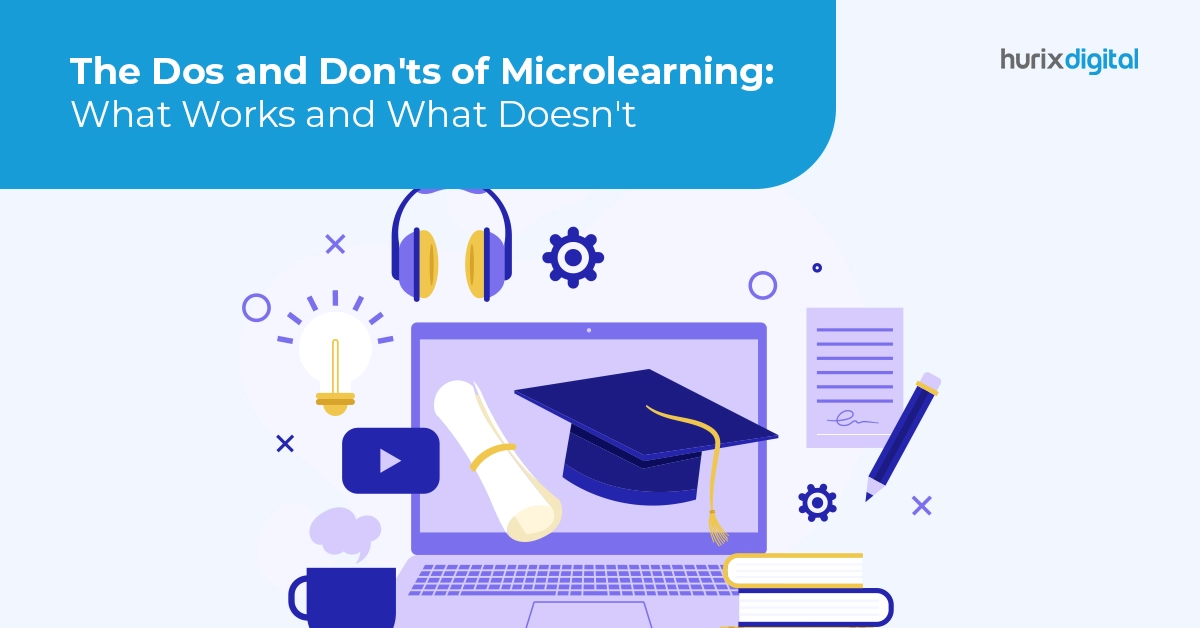The millennial learner is, by and large, a disinterested, distracted learner. Studies find that the young generation look at their phones around nine times an hour; however, ask them to look at a training video which is more than 4 minutes and their attention will begin to wane in no time. So, it is literally impractical to think that they would sit through long hours of training.
Related: Mobile Learning : Why Microlearning is more Effective for Impatient Millennials
Organizations today have to continuously focus on upgrading their employee skills to help them meet their career aspirations and organizational goals. And to ensure optimum learning outcomes, it is important to provide learning in a format they want and which they can access on the device of their choice. As mobile devices and the Internet take center-stage, one way forward for organizations is to adopt microlearning techniques to provide valuable training in the form of micro-sized nuggets. Microlearning not only helps to capture the attention of the learners but also provides them the information they need at their fingertips, anywhere and at the time they need it the most.
Related: 5 Reasons to Integrate Microlearning in Mobile Learning Strategy!
Besides addressing the challenges of the limited attention spans, microlearning is also a way to create more personalized content that addresses the unique learning needs of your employees. Each nugget is generally two to three minutes long, yet within this time span, it adequately provides the necessary information that your employee would need to satisfactorily perform a task. Besides, concept-specific microlearning bites also help to reinforce formal learning in classroom teaching sessions. Microlearning is the way forward in training; however, it is important to get it right in order to avoid pitfalls.
6 Microlearning Techniques That You Can Use to Provide Great Learning Experiences.
1. Keep it Short: Given that microlearning is short modules, keep it concise, about 3 to 5 minutes in length, and in this timeframe provide all the necessary information that your learners would find handy to enhance their performance. Your employees should find it convenient to fit these modules in their short breaks. Also, design them for spaced repetition. Keep in mind that the end goal of your microlearning module should be to provide all the necessary information to meet a goal and not information that is so condensed that it overwhelms the learner.
2. Focus on One Idea per Nugget: Again, since the ideal length of each micro bite is around 3 to 5 minutes, to ensure the most impact, focus on one idea per module. And this can be a bit tricky because you will have to choose your content wisely. Before implementing microlearning, it is a good practice to identify knowledge gaps you wish to plug. Focus on one gap at a time and if needed, break it down into sub-modules. Then create each microlearning nugget such that it focusses on one key point and elaborates the idea in a way that it makes a difference.
3. Enable Mobile Access: As said above, microlearning gained traction mainly due to the fact that more and more people now access all information they need on their mobile phones. So, microlearning modules are mainly designed for people on the move, or in other words, for the mobile environment. It is also a good practice to enable offline access to the microlearning courses because even though people generally have access to the Internet on their mobiles, it is not safe to assume they will have it at all times.
4. Use Different Media Formats: No one likes to read a massive amount of content even for just a few minutes. With microlearning, you can make learning a multi-sensory experience and use audio and video to supplement the reading. Using different media formats, you can bring alive the concepts and make learning more engaging and entertaining. Besides, you can also design microlearning lessons that allow the learner to practice concepts in a virtual environment and avoid making costly mistakes in real-time settings. To use multimedia, first focus on the idea you wish to convey and then identify that would best help to tell the story. Place appropriate visuals that are relevant and not images that take away learner’s attention without adding any value. The same rule applies for using audio and video. By presenting information using rich media formats you can keep your audience engaged and motivated.
5. Offer Customization: There is no one-size-fits-all when it comes to learning. One of the greatest benefits that microlearning provides is that it enables you to customize content in tune with your employees’ unique learning needs. Design your microlearning module in a way that it helps your employees learn the skills they want to learn and in a format they are most comfortable with.
6. Keep it Clean: The more clutter-free your microlearning module, both in terms of content and images, the better the learning outcomes. Segregate your content into what is essential and what is nice to know or additional value. Match media elements that you would need to bring alive the text but keep in mind that there is no unnecessary element that shifts focus of the end-learner away from the main subject of your microlearning module.
7. Facilitate Innovation: Since microlearning is best accessed on mobile devices, design your modules in a way that will allow learners to take control over their own learning such that they are not limited to just the information you provide. While a microlearning nugget allows slow-pace learners to revisit the concepts, it should also provide paths to more information to the fast learners who may wish to build upon that knowledge.
Conclusion:
In a fast-paced digital world where people are bombarded with information, their attention span becomes limited. For organizations, microlearning is a great way to capture learners’ attention and provide them with a more entertaining, engaging, contextual and immersive learning experience. Also, it’s an equally great way to dive into this sea of information and find the right kind of information, in the right amount and then repackage it in a format that is easily consumable by your learners, anywhere they want and anytime they want. However, this being said, it is important to avoid the pitfalls and incorporate microlearning design techniques that provide an enhanced learning experience.
Related: Benefits of Investing in Custom eLearning Courses for your Enterprise











